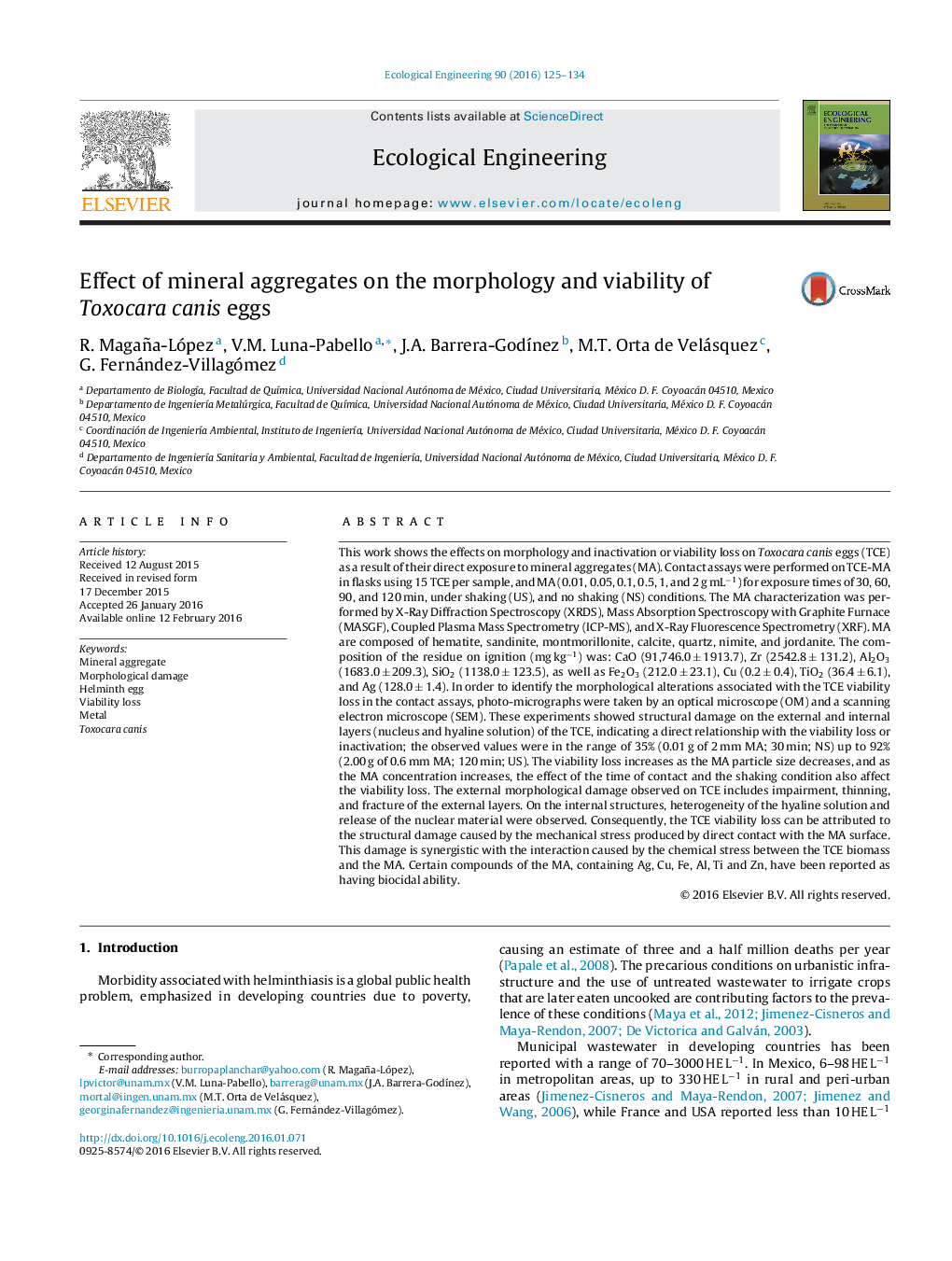| کد مقاله | کد نشریه | سال انتشار | مقاله انگلیسی | نسخه تمام متن |
|---|---|---|---|---|
| 4388655 | 1618009 | 2016 | 10 صفحه PDF | دانلود رایگان |
• The mechanical and chemical effects produced by the mineral aggregates on Toxocara canis eggs morphology and viability are showed.
• The causes of T. canis eggs morphological damage and viability loss are identified.
• A mechanism that explains T. canis eggs viability loss after contact with mineral aggregates is proposed.
This work shows the effects on morphology and inactivation or viability loss on Toxocara canis eggs (TCE) as a result of their direct exposure to mineral aggregates (MA). Contact assays were performed on TCE-MA in flasks using 15 TCE per sample, and MA (0.01, 0.05, 0.1, 0.5, 1, and 2 g mL−1) for exposure times of 30, 60, 90, and 120 min, under shaking (US), and no shaking (NS) conditions. The MA characterization was performed by X-Ray Diffraction Spectroscopy (XRDS), Mass Absorption Spectroscopy with Graphite Furnace (MASGF), Coupled Plasma Mass Spectrometry (ICP-MS), and X-Ray Fluorescence Spectrometry (XRF). MA are composed of hematite, sandinite, montmorillonite, calcite, quartz, nimite, and jordanite. The composition of the residue on ignition (mg kg−1) was: CaO (91,746.0 ± 1913.7), Zr (2542.8 ± 131.2), Al2O3 (1683.0 ± 209.3), SiO2 (1138.0 ± 123.5), as well as Fe2O3 (212.0 ± 23.1), Cu (0.2 ± 0.4), TiO2 (36.4 ± 6.1), and Ag (128.0 ± 1.4). In order to identify the morphological alterations associated with the TCE viability loss in the contact assays, photo-micrographs were taken by an optical microscope (OM) and a scanning electron microscope (SEM). These experiments showed structural damage on the external and internal layers (nucleus and hyaline solution) of the TCE, indicating a direct relationship with the viability loss or inactivation; the observed values were in the range of 35% (0.01 g of 2 mm MA; 30 min; NS) up to 92% (2.00 g of 0.6 mm MA; 120 min; US). The viability loss increases as the MA particle size decreases, and as the MA concentration increases, the effect of the time of contact and the shaking condition also affect the viability loss. The external morphological damage observed on TCE includes impairment, thinning, and fracture of the external layers. On the internal structures, heterogeneity of the hyaline solution and release of the nuclear material were observed. Consequently, the TCE viability loss can be attributed to the structural damage caused by the mechanical stress produced by direct contact with the MA surface. This damage is synergistic with the interaction caused by the chemical stress between the TCE biomass and the MA. Certain compounds of the MA, containing Ag, Cu, Fe, Al, Ti and Zn, have been reported as having biocidal ability.
Journal: Ecological Engineering - Volume 90, May 2016, Pages 125–134
